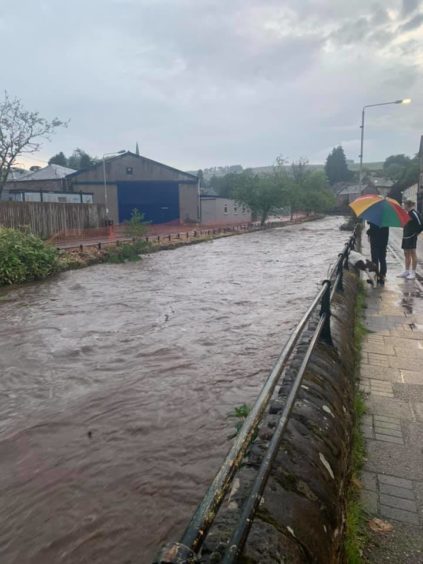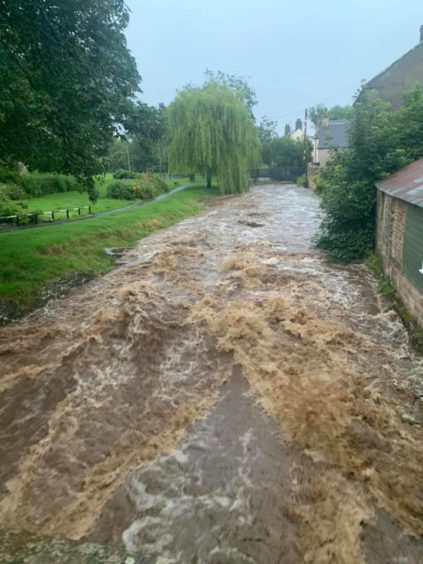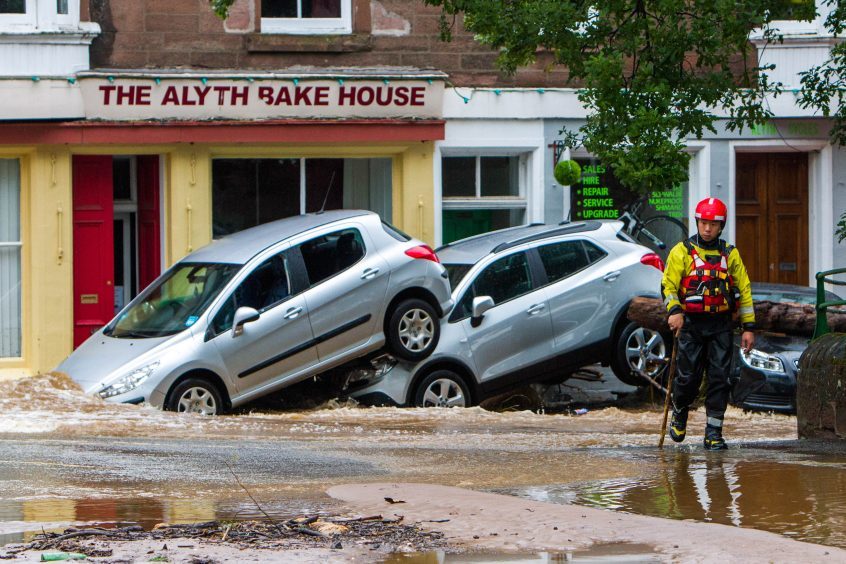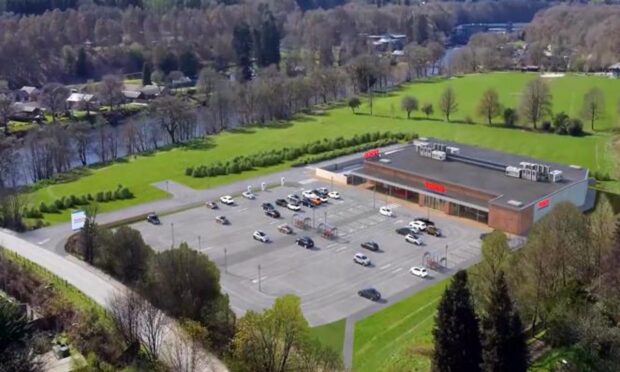Residents in Alyth are calling for fresh action to safeguard the town from another devastating flood.
Four years ago, the east Perthshire community was left picking up the pieces after torrential downpours caused widespread destruction to homes and businesses.
The town was hammered by a six-hour deluge that caused the burn, which flows through the centre of the community, to bursts its banks.
A range of measures and repairs were carried out in the aftermath of the “one-in-200 year” incident, including the installation of new bridges.
However, locals are now questioning whether enough was done to prevent further disaster after a recent spell of heavy rain caused sleepless nights for people living on the edge of the watercourse.
Residents said the burn filled up within seconds during rainfall on Wednesday night.
Callum Smith said the town was just a few inches away from another major flood.
“People were in tears. The noise of the rain scared the whole town because it brought back memories from four years ago.
“If there had been just one log jam, the town would have been devastated again. The council needs to come back and take another very serious look at this.”
Residents suggest further dredging work and the removal of a gravel island could prevent more problems.
Provost and local Conservative councillor Dennis Melloy said: “I received several phone calls from very concerned residents regarding the height of the Alyth Burn.
“I immediately contacted our roads team who promptly investigated the burn area’s from the Alyth Den, down to the old sawmill through to the centre of Alyth to the phone boxes. They then checked the Springbank area at the lock ups.”
He said: “They continued to keep an eye on the situation and at midnight the water had dropped six inches to eight inches.”
Mr Melloy said he has pushed, so far unsuccessfully, for further dredging.
Former council leader and resident Ian Miller, who oversaw Alyth’s fight back in 2015, said he was pleased the burn was able to cope with the deluge this time.
“A feature of the floods, and near floods, in Alyth is the alarming speed with which the burn rises and then falls.
“This is no doubt to some extent due to the efficiency of modern drainage being installed upstream of Alyth, but it seems to me that the greatest impact on reducing the sudden rise and fall of water levels could be achieved by addressing the upper catchment area which is largely devoid of vegetation.”
He added: “In my view, forestation and some ponding areas would help greatly in levelling out the run-off from that area.”
Mr Miller said: “I hope that all of the agencies involved are looking seriously at what can be done in the area, to ensure that the risks are reduced for those who live with the threat of future flooding.”
A council spokeswoman said the burn was inspected every three months, with regular work carried out to clear obstructions.
She said dredging was not traditionally a matter for councils or landowners. “The modern approach to river management aims to minimise disruption to the natural characteristics of rivers and to work with nature to reduce the risk of flooding,” she said.












